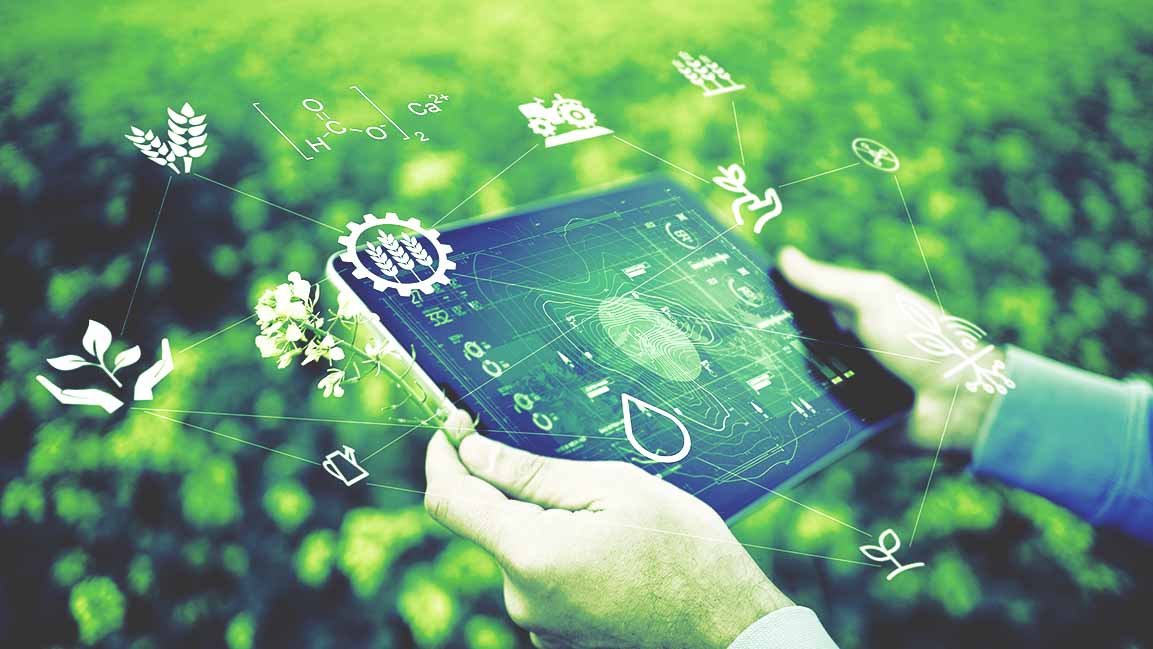- | 12:00 pm
Why do we need a human-centric approach to everything? Takeaways from the Impact Council annual meeting
At the Impact Council annual meeting, the common thread across the panel sessions was about keeping humans at the center of tech, design, cities, sustainability, and everything else
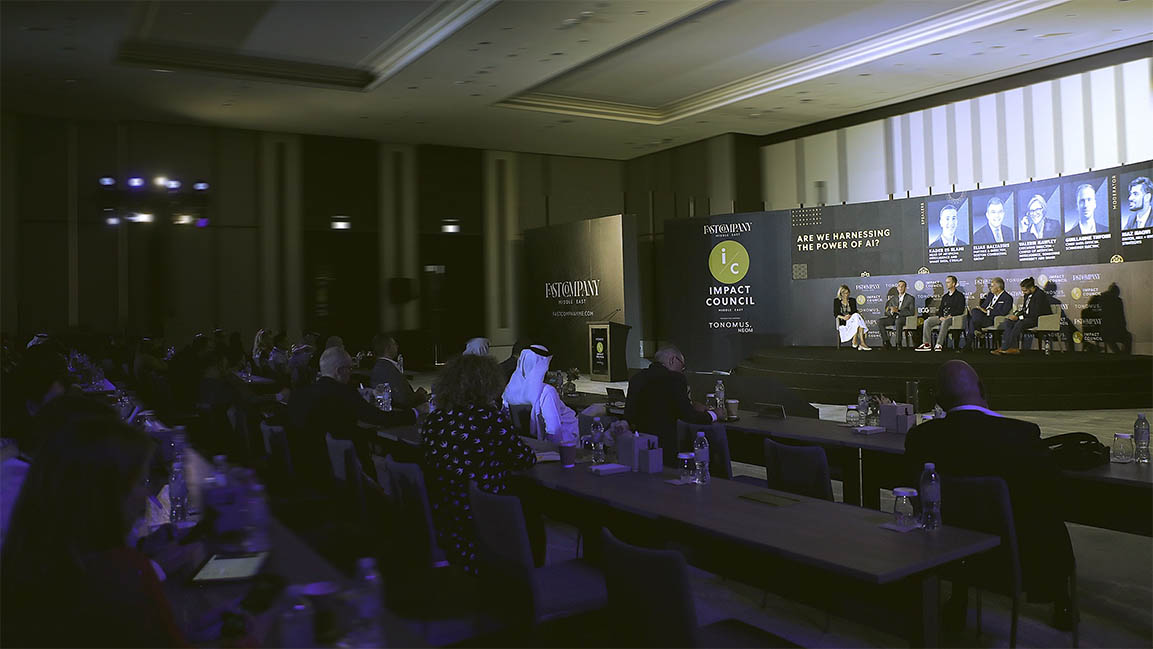
Of late, the debates surrounding artificial intelligence (AI) and digital transformation have grown at a pace that’s arguably surpassed only by technological advances.
We have seen a growing backlash against technology companies, brought on by the rise of concerns around privacy, bias in AI, and whether the tech has dire consequences for humanity.
In part, this is a result of building faster and better technologies than competitors but forgetting a key stakeholder in the process: humans.
At the Fast Company’s Impact Council annual meeting, an invitation-only collective of innovative leaders and the most creative people in business, the common thread across the panel sessions was a human-centric approach.
From sustainability to cities and design thinking, it would be easy to approach everything with primarily a technology lens. However, the experts agree that humans must be placed at the center of everything. Design and technology are viewed as something to help humans, enabling them to achieve more and enrich their lives.
With that in mind, here are a few key takeaways from Fast Company’s Impact Council annual meeting:
RIGHT DATA CRITICAL TO BUILD TRUST IN AI
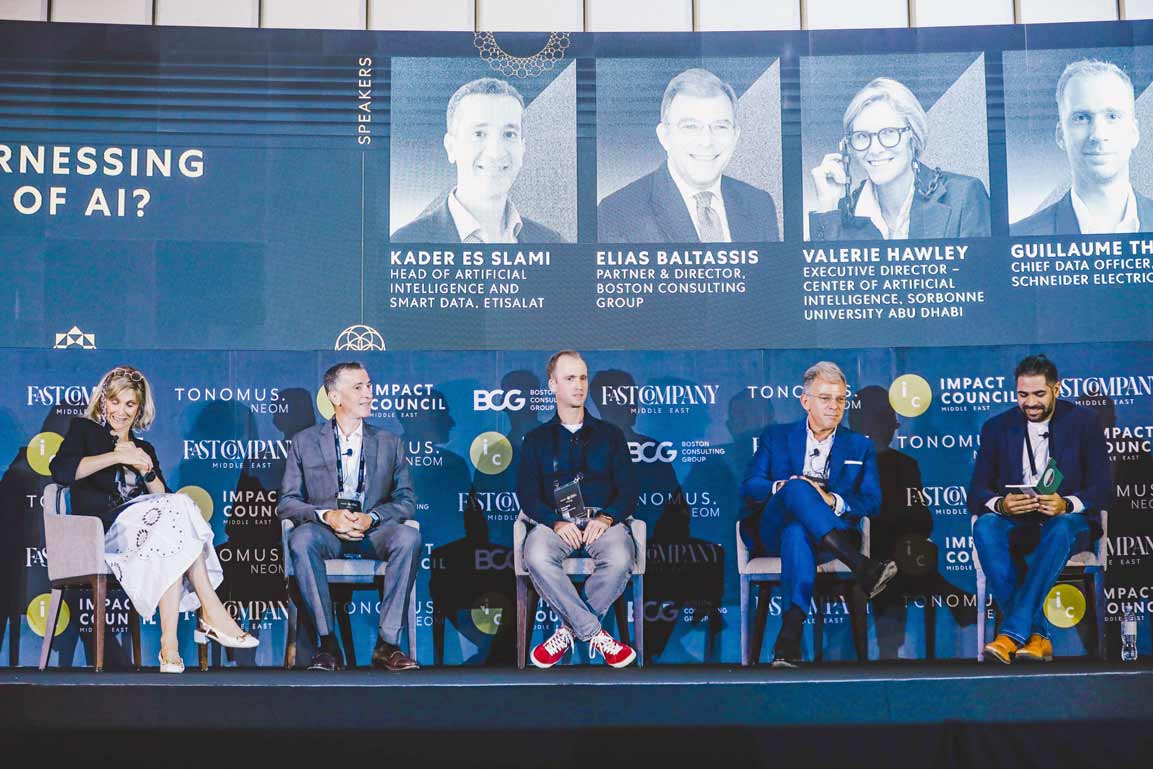
(From left to right) Valerie Hawley, Executive Director – Center of Artificial Intelligence, Sorbonne University Abu Dhabi; Kader Es Slami, Head of Artificial Intelligence and Smart Data, Etisalat; Guillaume Thfoin, Chief Data Officer, Schneider Electric; Elias Baltassis, Partner & Director, Boston Consulting Group; and Riaz Naqvi, Editor, Hill + Knowlton Strategies
AI is an everyday reality shaping every industry and sector, but trust is key to any effective AI implementation. While we have mountains of data to train AI systems, creating a system that users trust demands thoughtful use of data to ensure meaningful results and trustworthy AI.
“Bias is a common problem when it comes to ethical AI systems. It stems from bad data or algorithms,” says Elias Baltassis, Partner & Director at Boston Consulting Group. Speaking about the major hurdles in implementing an AI system, he says some of the common mistakes include “the fishbowl effect” – where a company hires a lot of data scientists.
“Some companies focus first on technology, buying large data lakes and not making good use of them. Companies don’t focus on building a team who can use these data lakes.”
Guillaume Thfoin, Chief Data Officer, Schneider Electric, says companies hire data scientists without understanding the purpose.
“Initially, when I hired data scientists, I had no data, and my data scientists wanted to work on cool fancy use cases, they had no interest in interacting with the business, and it was a mess.”
“In a business, data science is more about your business data; it’s a continuum. Having the right data is necessary, which can influence your business metrics. It’s the critical part of the driving transformation, ” adds Thfoin.
Agreeing that data scientists lay a solid data foundation for the business, helping to make better decisions, Valerie Hawley, Executive Director, Center of Artificial Intelligence, Sorbonne University Abu Dhabi, says, “Putting your data scientist in a corner, with no interaction with your business side of things, is not good. We have to train people in the workplace.”
Emphasizing the significant role of academia in AI adoption, she adds, “Now every part of the curriculum in a university has data science, but at an organizational level, there is a lack of talent, so we need to upskill. That’s what universities can do.”
As businesses of all sizes leverage AI to develop new products and services, optimize processes and boost productivity, Kader Es Slami, Head of Artificial Intelligence and Smart Data, Etisalat, talked about Applied AI, which runs on actual data and delivers real-world results and outcomes. “Applied AI focuses on specific areas or subsets of data and applies them to the industry to create more revenue, streamline processes, and boost customer satisfaction and experience.”
SUSTAINABILITY, FOOD WASTE, AND HUMAN BEHAVIOR

(From left to right) Khuloud Al Nuwais, Chief Sustainability Officer, Emirates Foundation; Eng Mohamed AlHosani, Chief Sustainability Officer, BEEAH Group; Florence Bulte, Chief Sustainability Officer, Chalhoub Group; Dina Epifanova, Global Head of Sustainability, IFFCO Group; and Karrishma Modhy, Managing Editor, Fast Company Middle East
An estimated one-third of all the food produced worldwide goes to waste. Wasted food isn’t just a humanitarian concern—it’s a sustainability issue. When we waste food, we also waste all the energy and water it takes to grow it. And if food goes to the landfill and rots, it produces methane—a potent greenhouse gas.
Food waste is a global issue that begins at home, and as such, experts called for behavior change. The behavioral drivers that lead to food waste are complex but predominantly center around human habits.
“We must change our behavior and current habits of how we waste food daily. Conscious living is the road ahead,” said Khuloud Al Nuwais, Chief Sustainability Officer at Emirates Foundation.
According to Dina Epifanova, Global Head of Sustainability, IFFCO Group, the food industry greatly contributes to climate change. “Up to 30% of all greenhouse gas emissions come from the food sector. Also, 30% of food is wasted globally.”
“We eat much more than we need. We depend on animals for food, which is not good for the environment. It’s time we decrease animal-based protein and switch to plant-based protein,” she added.
But how are we beginning to change the way we live? “Education and awareness will get people to change their current behaviors,” Al Nuwais added.
Experts at the council meeting also emphasized the importance of a human-centered approach in implementing business sustainability goals. “Businesses must look at governance; environmental strategy; constant investment in innovation and technology, and partnership and collaboration,” said Florence Bulte, Chief Sustainability Officer, Chalhoub Group. “And ensure the growth of people through learning and development.”
With two UN climate negotiations taking place in the Middle East and North Africa (MENA) region, the recently concluded COP27 in Egypt, followed by COP28 in the UAE next year, climate change and prioritizing sustainability has gained mainstream attention in the region. “At COP28, renewable energy and nature-based technology will have a front-row seat,” said Eng Mohamed AlHosani, Chief Sustainability Officer, Be’eah Group. He added that keeping waste out of landfills and changing human behavior are critical challenges.
BUILDING THE CITIES OF FUTURE
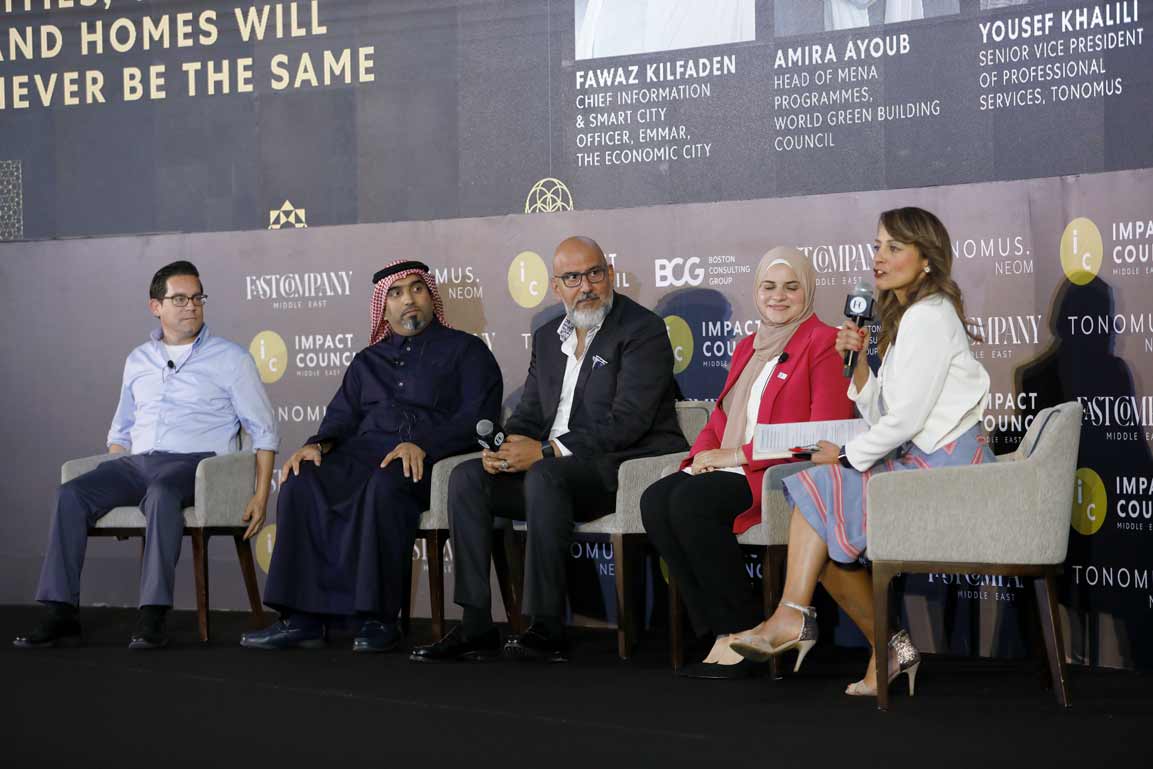
(From left to right) Jason Whittet, Head of cities, AWS; Fawaz Kilfaden, Chief Information & Smart City Officer, Emaar, The Economic City; and Yousef Khalili, Senior Vice President of Professional Services, Tonomus; Amira Ayoub, Head of MENA Programmes, World Green Building Council; and Amandeep Bhangu, International Presenter & Moderator
Think of AI, big data, the Internet of Things (IoT), and autonomous vehicles; they are changing the world and how we live. Our cities, workplaces, and homes are no exception. The technologies increase efficiency and improve the quality of services and life for humans. “A city, a building, an office, a house needs to predict, needs to anticipate and be on its toes, ready to serve you,” says Yousef Khalili, Senior Vice President of Professional Services, Tonomus. “Having a human-centric approach helps to animate the whole city around the human and not the other way around.”
Regarding how cities are evolving, Jason Whittet, Head of cities at AWS, says, “Smart cities are growing. In the last ten years, we’ve seen a lot of smart ideas like smart lighting, parking, and service delivery. Technology has evolved and matured, and how we use it has also changed. It is much more intentional.”
The pandemic has proven that we need change, and smart homes and buildings have become “necessary utility,” says Fawaz Kilfaden, Chief Information & Smart City Officer, Emaar, The Economic City. “Remote working is the new norm that we need to adapt to. When it comes to offices and workplaces, we need to show that we have the right operations and innovative building solutions.”
Stressing systemic changes to health and well-being, and creating spaces in cities more connected to nature, Amira Ayoub, Head of MENA Programmes, World Green Building Council, says, “Our cities work must toward our well-being by creating spaces for us to be better.
Smart city solutions could be key in measuring what we have. If we envision our cities as regenerative, we need to use all the tools we have to measure the outcome of all the data.”
While every city is different, they must have a culture that supports innovation, Whittet adds, “Cities are on a journey from open data to open wisdom. In the future, to make a prediction, cities will have a data trust, an agency responsible for driving the data agenda, and where all the data lives. This will provide transparency, inclusiveness, equity, and trust we all want.”
WHAT’S THE FUTURE OF DESIGN?
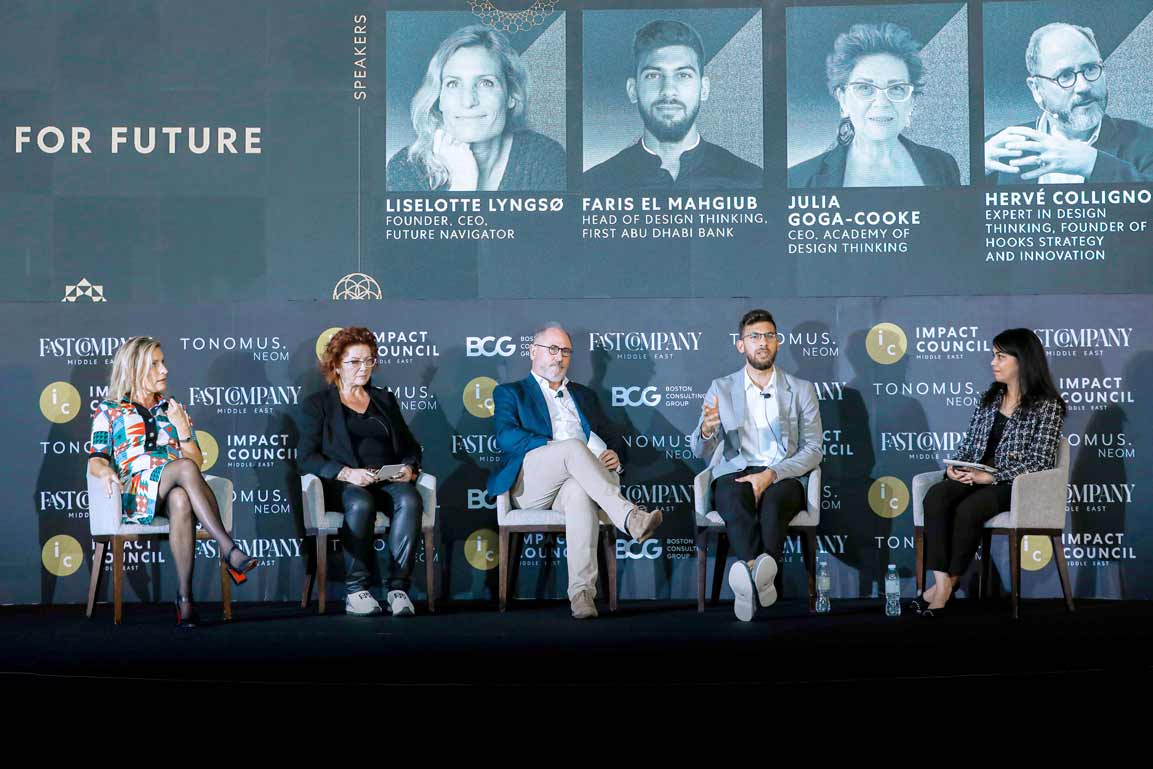
(From left to right) Liselotte Lyngsø, Founder, CEO, Future Navigator; Julia Goga-Cooke, CEO, Academy of Design Thinking; Hervé Collignon, Expert in Design Thinking, Founder of Hooks Strategy and Innovation; Faris El Mahgiub, Head of Design Thinking, First Abu Dhabi Bank; and Rachel Dawson, Correspondent, Fast Company Middle East
In designing for the future, including human-centric solutions in the design experience is crucial to provide a creative problem-solving solution to help push innovation forward that is grounded in human well-being and user satisfaction. So what exactly is human-centered design—and how does it help to solve actual human and community needs?
“Design thinking allows us to take a different approach based on logic and principle,” says Faris El Mahgiub, Head of Design Thinking at First Abu Dhabi Bank.
Similarly, Julia Goga-Cooke, CEO of Academy of Design Thinking, says that human-centered design is an approach used to solve complex problems “by putting people at the center and all life at the center. It is a holistic approach to solving problems.”
“Design thinking gives you an approach, some tools, and methods to solve complex problems with many stakeholders,” adds Goga-Cooke.
Hervé Collignon, an expert in design thinking and founder of Hooks Strategy and Innovation, says human-centered design can create meaningful and sustainable solutions. “We live in a world that is moving extremely fast with the pace of technology. We need to place the human being at the center of everything instead of being driven into this massive tech turmoil which loses us.”
“An organization can be re-organized with the help of design thinking, allowing employees to reshape the whole company,” adds Collignon.
Liselotte Lyngsø, founder and CEO of Future Navigator, says humans are moving into a precision age. “This means we can use all this holistic data and be precise in what we think is creating value. We can use data to re-humanize both humans and the planet.”
Lyngsø says data is needed to understand how to create well-being. “We have organized ourselves wrong and need to design our way out of it.”
DIGITAL TRANSFORMATION BENEFIT HUMANS
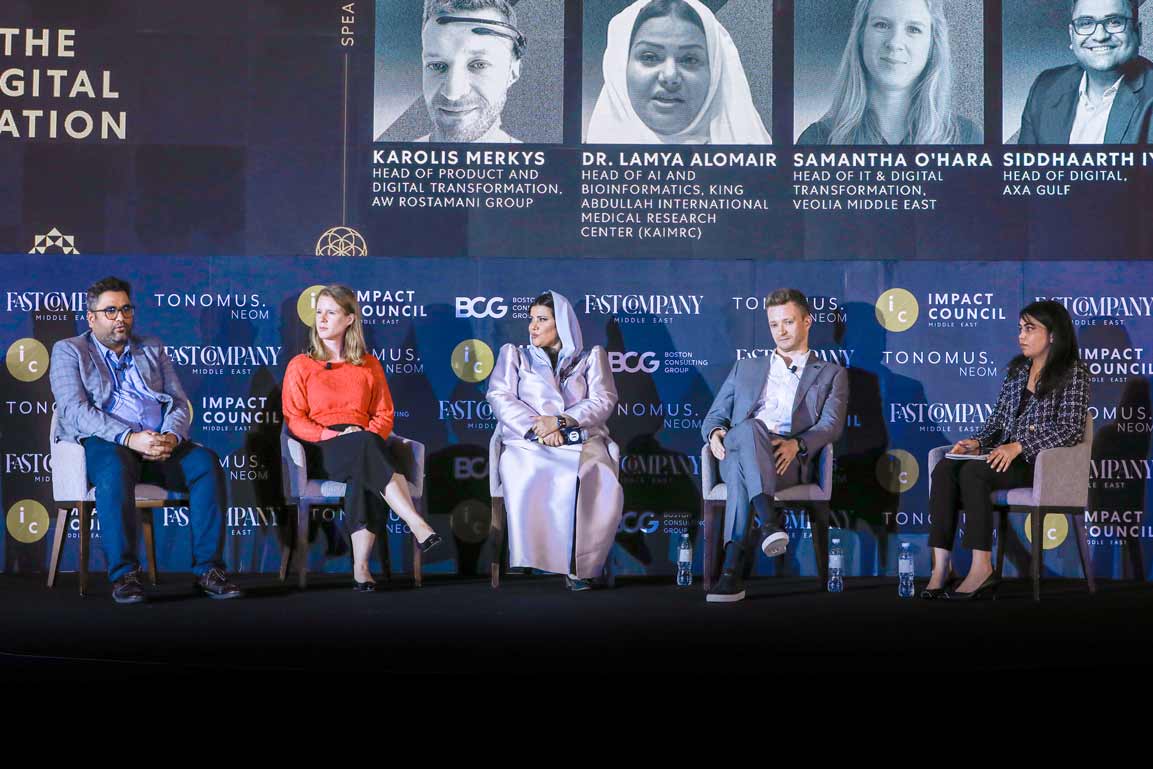
(From left to right) Siddhaarth Iyer, Head Of Digital, AXA Gulf; Samantha O’Hara, Head of IT & Digital Transformation, Veolia Middle East; Dr. Lamya Alomair, Head of AI and Bioinformatics, King Abdullah International Medical Research Center (KAIMRC); Karolis Merkys, Head of Product and Digital Transformation, AW Rostamani Group; and Rachel Dawson, Correspondent, Fast Company Middle East
As business leaders accelerate the pace of digital transformations to drive value, those who take deliberate steps to enrich people through the change are more likely to be successful.
“Humans are at the heart of the digital revolution. But we have to be ready for the transformation with a big arm,” says Dr. Lamya Alomair, Head of AI and Bioinformatics, at King Abdullah International Medical Research Center.
While new technologies like Industry 4.0 are getting a lot of attention, experts agreed digital services should be adopted only when they can make systems more efficient for end users.
“Industry 4.0 is here. Humans shouldn’t be scared that they are going to be replaced. It is not the first time we are transforming. With every industrial revolution, employment numbers have only soared,” says Karolis Merkys, Head of Product and Digital Transformation, AW Rostamani Group. “The important question is how we enable people and organizations to go through the change.”
Digital technologies can be valuable tools to reduce health and social inequalities. “You can never remove the human element. Technology should empower humans to bring in solutions and not replace them,” says Samantha O’Hara, Head of IT & Digital Transformation, Veolia Middle East.
It’s vital to ensure digital improvements benefit humans, agreed the panel on Humans at the Heart of Digital Transformation. “Digital transformation has to democratize more. It should be on the humanities side. We live in a capitalistic world where companies put profits before people. But it is slowly changing,” says Siddhaarth Iyer, Head Of Digital, AXA Gulf.


















